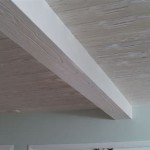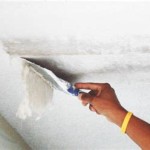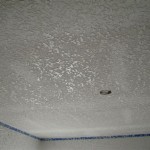How To Hang A Swing From The Ceiling: A Guided Step-by-Step Approach
Hanging a swing from the ceiling can be a rewarding project, providing a relaxing and enjoyable space within a home. However, it's crucial to approach this task with meticulous planning and execution to ensure safety and stability. This article provides a comprehensive guide to hanging a swing from the ceiling, detailing the necessary steps and considerations.
1. Assessment and Planning: Identifying Structural Support
The initial and arguably most important step is to identify a suitable location and assess the structural integrity of the ceiling. A swing, even with a single occupant, generates significant dynamic forces. Therefore, anchoring the swing to a solid, load-bearing element of the ceiling is paramount. Hollow ceilings, such as suspended ceilings or drywall alone, are insufficient and pose a serious safety hazard.
Typically, the ideal anchoring point is a ceiling joist or beam. Joists are horizontal structural members that support the ceiling and are usually spaced at regular intervals. To locate a joist, a stud finder can be used. These devices detect changes in density behind the drywall, indicating the presence of a joist. Alternatively, tapping on the ceiling and listening for a solid sound can also help identify a joist. A hollow sound suggests there is no support behind the drywall.
Once a potential joist is located, it's crucial to verify its load-bearing capacity. Ideally, the joist should be made of solid wood, such as lumber or engineered wood products like laminated veneer lumber (LVL). The dimensions of the joist are also important; wider and thicker joists generally provide greater support. If there is any uncertainty about the joist's ability to bear the weight, it is advisable to consult with a structural engineer or qualified building professional.
If the ceiling lacks exposed joists, accessing the attic or space above the ceiling may be necessary to inspect the framing. This allows for a direct assessment of the joist's size, material, and condition. Furthermore, it provides an opportunity to reinforce the existing joist or add additional support if needed. This might involve sistering another joist alongside the existing one or installing bridging between joists to distribute the load.
When choosing a location, consider the swing's intended use and the available space. Ensure there is ample clearance around the swing to prevent collisions with walls, furniture, or other objects. The swing should also be positioned away from potential hazards, such as light fixtures or electrical wiring.
2. Selecting the Appropriate Hardware and Tools
Choosing the correct hardware is essential for a safe and secure swing installation. The hardware must be specifically designed for suspending weight from the ceiling and capable of withstanding the dynamic forces generated by swinging.
A primary component is a heavy-duty ceiling hook or eye bolt. These are typically made of forged steel and have a threaded shank that screws into the joist. The hook or eye bolt should be rated for a weight capacity that significantly exceeds the anticipated load. A safety factor of at least five is recommended, meaning the hardware should be able to withstand at least five times the weight it is expected to support. For example, if the swing is intended for adults weighing up to 200 pounds, the hardware should be rated for at least 1000 pounds.
The length of the threaded shank of the hook or eye bolt is also critical. It should be long enough to penetrate deep into the joist, ensuring a secure connection. As a general guideline, the shank should penetrate at least half the thickness of the joist. If the joist is 4 inches thick, the shank should be at least 2 inches long.
In addition to the ceiling hook or eye bolt, other necessary hardware includes: chains or ropes for suspending the swing, quick links or carabiners for connecting the swing to the chains or ropes, and potentially washers to provide a flat surface for the hook or eye bolt to bear against the ceiling.
Essential tools for this project include: a drill with an appropriately sized drill bit for creating a pilot hole in the joist, a socket wrench or adjustable wrench for tightening the hook or eye bolt, a stud finder for locating the joist, a measuring tape for determining the swing's placement and height, a level for ensuring the swing hangs straight, and safety glasses to protect your eyes.
Always prioritize using high-quality hardware from reputable manufacturers. Avoid using hardware that appears damaged, corroded, or of questionable quality. Inspect all hardware carefully before installation and replace any components that show signs of wear or weakness.
3. Installation Procedures: A Step-by-Step Guide
With the location identified, the hardware selected, and the tools gathered, the installation process can begin. The following steps outline a safe and effective procedure for hanging a swing from the ceiling.
Step 1: Prepare the Joist. After pinpointing the center of the joist, use a drill with a drill bit slightly smaller than the diameter of the hook's or eye bolt's threaded shank to create a pilot hole. The pilot hole will guide the hardware and prevent the wood from splitting. Drill the pilot hole to a depth slightly shorter than the shank's length. This ensures a tight and secure fit.
Step 2: Install the Ceiling Hook or Eye Bolt. Screw the hook or eye bolt into the pilot hole. Apply firm, even pressure while turning the hardware clockwise. If necessary, use a wrench to provide additional leverage. Continue tightening the hardware until it is securely seated against the ceiling. Avoid overtightening, as this could damage the wood fibers of the joist.
Step 3: Attach the Suspension Hardware. Connect the chains or ropes to the ceiling hook or eye bolt using quick links or carabiners. Ensure the quick links are properly tightened and the carabiners are securely locked. The length of the chains or ropes will determine the height of the swing. Adjust the length as needed to achieve the desired height. It is preferable to use equal lengths of chain or rope to ensure the swing hangs level.
Step 4: Attach the Swing. Connect the swing to the chains or ropes using quick links or carabiners. Again, ensure the quick links are properly tightened and the carabiners are securely locked. Pay attention to the swing's orientation, ensuring it is facing the desired direction.
Step 5: Test and Adjust. Before allowing anyone to use the swing, thoroughly test its stability and weight-bearing capacity. Apply gradually increasing weight to the swing, starting with a light load and progressing to the maximum anticipated weight. Monitor the hardware and the joist for any signs of stress or movement. If any issues are detected, immediately address them before proceeding.
Step 6: Level the Swing. Use a level to ensure the swing is hanging straight. If necessary, adjust the length of the chains or ropes to achieve a level swing. Small adjustments can be made by adding or removing links from the chains or by adjusting the knots in the ropes.
Step 7: Regular Inspection. After installation, regular inspections are crucial. Periodically examine the hardware and the joist for any signs of wear, corrosion, or damage. Check the tightness of the quick links and carabiners. If any issues are identified, promptly replace or repair the affected components. Additionally, consider the age and durability of the swing itself. Replace the swing if it shows signs of wear and tear that might compromise safety.
Hanging a swing from the ceiling requires careful planning, attention to detail, and a commitment to safety. By following these guided steps and prioritizing the structural integrity of the ceiling, a secure and enjoyable swinging experience can be created.

Oatlands Historic House Gardens Updated July 2024 139 Photos 47 Reviews 20850 Plantation Ln Leesburg Virginia Venues Event Spaces Phone Number Yelp

Oatlands Historic House Gardens Updated July 2024 139 Photos 47 Reviews 20850 Plantation Ln Leesburg Virginia Venues Event Spaces Phone Number Yelp

Newshawks 1 April 2024 Flip Ebook Pages 44 Anyflip

All 3 199 Positive 8 Letter Words With Meanings Examples Impactful Ninja

The Best 10 Tea Rooms In Clarksburg Md Last Updated May 2024 Yelp

The Best 10 Tea Rooms Near Marshall Va Last Updated June 2024 Yelp

Oatlands Historic House Gardens Updated July 2024 139 Photos 47 Reviews 20850 Plantation Ln Leesburg Virginia Venues Event Spaces Phone Number Yelp
Stretching The Heavens

The Best 10 Tea Rooms Near Mgm National Harbor In Oxon Hill Md Yelp
Forcealign Data Corpus En Vcb Classes Cats At Master Emjotde Github
Related Posts








